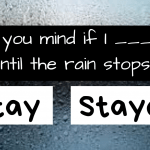Do You Get Confused Between To, Too, and Two?
Do you often find yourself getting confused between the words "to," "too," and "two"? If so, you're not alone! These three words are homophones, which means they sound the same but have different meanings and spellings.
Knowing when to use each word correctly can be tricky, but it's an important skill to have in both written and spoken communication. That's why we've created this quiz to help you test your knowledge and improve your understanding of these commonly confused words.
The quiz consists of multiple-choice questions that will challenge you to identify the correct usage of "to," "too," and "two" in various contexts. You'll be presented with sentences and asked to choose the correct word to fill in the blank.
Don't worry if you don't get all the answers right on your first try. The quiz is designed to be a learning experience, and you'll receive feedback on each question to help you understand why a particular answer is correct or incorrect.
So, are you ready to put your knowledge to the test? Take our quiz and see how well you can differentiate between "to," "too," and "two"!
FAQs about To, Too, and Two
1. What is the difference between to, too, and two?
To is a preposition that indicates direction or movement towards a destination. Too is an adverb that means also or excessively. Two is a number that comes after one and before three.
2. How can I remember the difference between to, too, and two?
One way to remember is to associate to with direction, too with excess, and two with the number. You can also practice using them in sentences and reading them aloud to reinforce the correct usage.
3. What are some common mistakes people make with to, too, and two?
Some common mistakes include using to instead of too (e.g. "I am to tired"), using too instead of to (e.g. "I am going too the store"), and misspelling two as "to" or "too" (e.g. "I have to apples").





